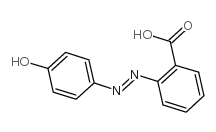Binding properties of HABA-type azo derivatives to avidin and avidin-related protein 4.
Susanna Repo, Tiina A Paldanius, Vesa P Hytönen, Thomas K M Nyholm, Katrin K Halling, Juhani Huuskonen, Olli T Pentikäinen, Kari Rissanen, J Peter Slotte, Tomi T Airenne, Tiina A Salminen, Markku S Kulomaa, Mark S Johnson
Index: Chem. Biol. 13(10) , 1029-39, (2006)
Full Text: HTML
Abstract
The chicken genome encodes several biotin-binding proteins, including avidin and avidin-related protein 4 (AVR4). In addition to D-biotin, avidin binds an azo dye compound, 4-hydroxyazobenzene-2-carboxylic acid (HABA), but the HABA-binding properties of AVR4 are not yet known. Differential scanning calorimetry, UV/visible spectroscopy, and molecular modeling were used to analyze the binding of 15 azo molecules to avidin and AVR4. Significant differences are seen in azo compound preferences for the two proteins, emphasizing the importance of the loop between strands beta3 and beta4 for azo ligand recognition; information on these loops is provided by the high-resolution (1.5 A) X-ray structure for avidin reported here. These results may be valuable in designing improved tools for avidin-based life science and nanobiotechnology applications.
Related Compounds
| Structure | Name/CAS No. | Molecular Formula | Articles |
|---|---|---|---|
 |
2-(4-Hydroxyphenylazo)benzoic acid
CAS:1634-82-8 |
C13H10N2O3 |
|
Development of an efficient signal amplification strategy fo...
2015-02-15 [Anal. Chim. Acta 859 , 66-71, (2015)] |
|
Synthesis and characterization of alginate/poly-L-ornithine/...
2008-09-01 [J. Microencapsul. 283 , 840-848, (2008)] |
|
Biotinylated thermoresponsive core cross-linked nanoparticle...
2011-04-01 [J. Colloid. Interface Sci. 356(1) , 16-23, (2011)] |
|
Rational modification of ligand-binding preference of avidin...
2008-05-05 [ChemBioChem. 9(7) , 1124-35, (2008)] |
|
Determination of structural, spectrometric and nonlinear opt...
2013-03-15 [Spectrochim. Acta. A. Mol. Biomol. Spectrosc. 105 , 80-7, (2013)] |